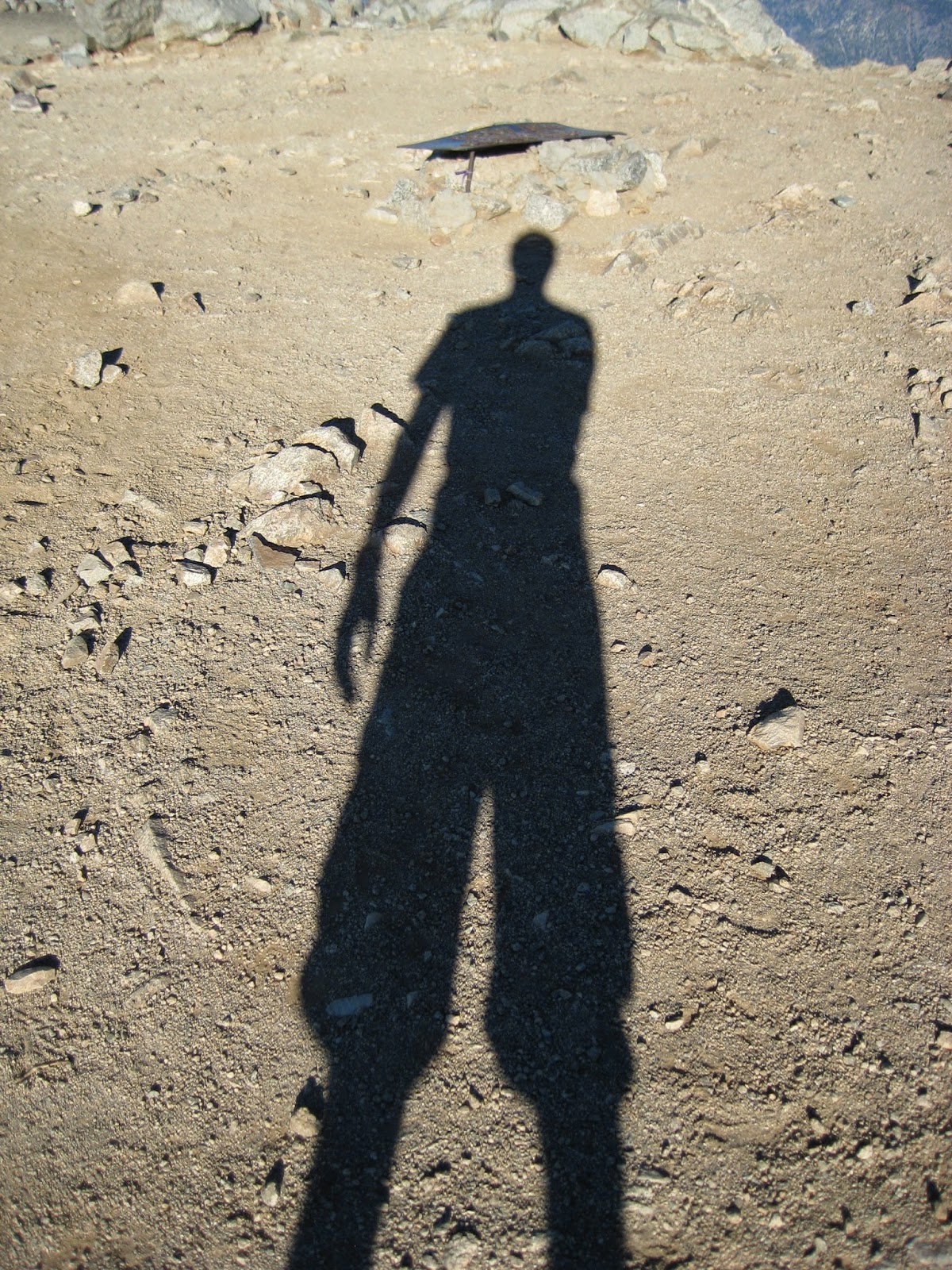At 5:20AM on August 30 (2014), I began walking by headlamp up the dirt road to the start of the Ski Hut Trail. Several minutes later, at the hairpin turn by the waterfall, I encountered two officers emerging from a sheriff's SUV. They informed me that a search and rescue (SAR) operation was underway for a hiker who had not returned from a climb of Mt. Baldy the previous day. The last communication with the missing hiker was at 6PM the night before, when he called to say he was in "treacherous" terrain. After gleaning every other detail I could from the officers, I continued on with eyes and ears open for the missing hiker.
Upon reaching the intersection with the Ski Hut Trail, I was disappointed to discover that the nice new sign that was posted there a few months ago was gone. Stolen, I assumed. Continuing up past the rusty register box and then around the bend, I easily spotted the unmaintained (but increasingly popular) "Register Ridge" path in the dark. Slogging up a few hundred feet before turning off my headlamp, I became aware of something that is usually absent in these hills: annoying insects. These mosquitoes or gnats or whatever they were pestered me for at least an hour.
First light on Mt. Baldy
First light on Register Ridge
Playing with shadows at 6:30AM
Early morning on Baldy Bowl. Somewhere out there, a benighted hiker is praising the dawn.
With the exception of two things, the remainder of the hike to the summit was unremarkable. First, I made a point of stopping every few minutes to look and listen for the missing hiker. Second, one or two SAR helicopters were making the rounds, sometimes passing only a hundred feet overhead.
The homestretch.
SAR helicopter passing over Harwood Peak
Baldy/Harwood Saddle in morning shade
A little before 8AM, I stepped onto the summit and noticed two SAR personnel nearby on the West Baldy ridge. After stopping for a few pictures on the summit, I walked over to them and inquired about the search. They had hiked up to the summit during the night, but had seen no signs of the missing hiker.
The summit at 8AM
SAR helicopter heading toward West Baldy Peak
After taking a short break there on the West Baldy ridge (and thereby unfortunately missing the omnipresent Shin on the summit), I started down the Ski Hut Trail. Several hundred feet down, in the vicinity of the airplane wreckage, I spotted two SAR personnel. Moving slowly through the upper reaches of Goode Canyon, they were pausing every minute or so to yell the missing hikers name. Continuing on my way, I decided to cut down the western side of the bowl, in order to scan the bowl for signs of the missing hiker.
Baldy Bowl
San Antonio Ski Hut
Arriving at the ski hut with shoes full of sand and grit from scree-skiing, I paused to empty them out, which was just long enough to hear a woman scream, "Oh my God, here's my wedding ring! I've been looking for this for a month!"
Far below the ski hut, I saw two pairs of SAR personnel slowly making their way up San Antonio Canyon. With full packs and long sleeve clothes, they must have been baking. Around the same time, I found myself re-entering mosquito territory, and was subsequently pestered all the way back down to the parking lot. But before reaching my car, I made a quick stop at the porta john, which was as hot as a sauna. Is there any better way to end a hike?
Arriving home at noon, I immediately hopped on the internet to check for updates on the missing hiker. To my surprise, there was nothing to be found then or the rest of the day. It was only later in the evening that I got word (from the omniscient Shin) that the hiker had been found around noon.

















































.jpg)
